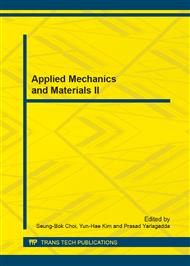p.359
p.363
p.368
p.374
p.379
p.384
p.388
p.392
p.396
RCS Calculation of Tank Turrets and their Improved Stealth Shapes
Abstract:
By considering the effects of shadowing on RCS, calculation on panel and edge diffrection was performed. Taking the model of sphere and flat structure as numerical example, results show that the method is effective. The RCS of M1A2SEP tanks turrets and type 99 tanks turrets were calculated at different angle by combining the physical optics and equivalent currents. The shape of the turrets were improved to make the stealth effect better.
Info:
Periodical:
Pages:
379-383
Citation:
Online since:
December 2013
Authors:
Keywords:
Price:
Сopyright:
© 2014 Trans Tech Publications Ltd. All Rights Reserved
Share:
Citation:


